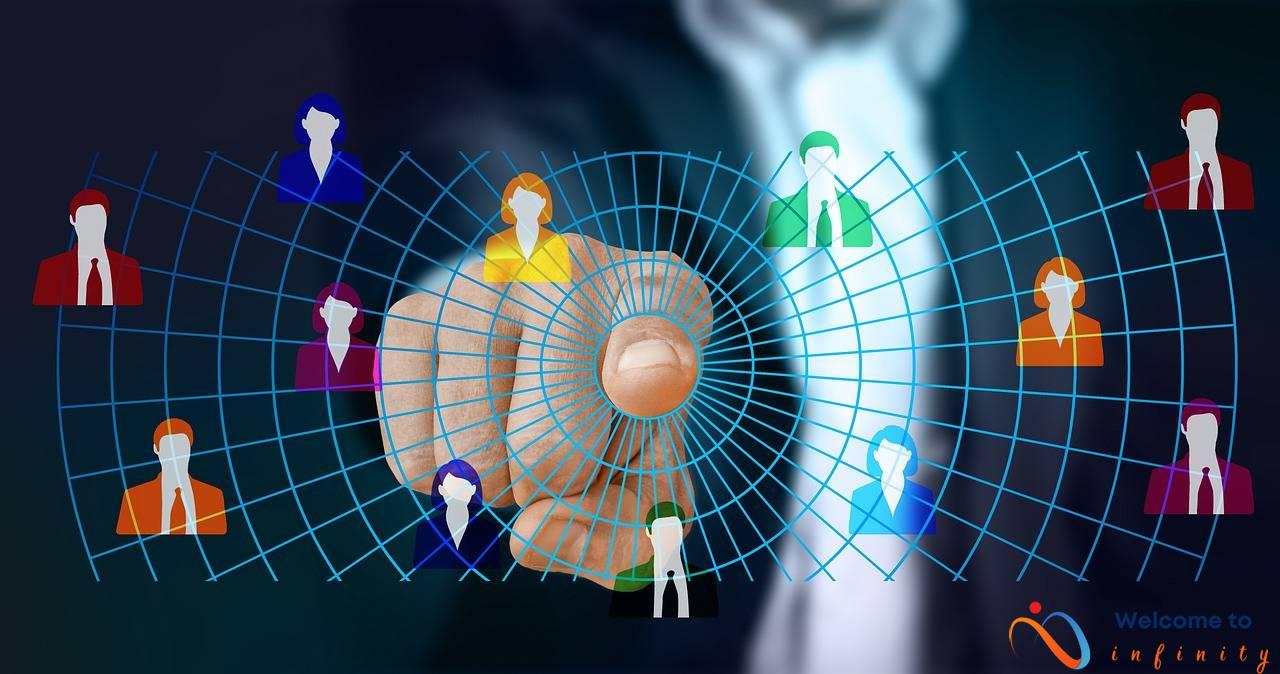Earth's natural resources are essential for the survival of all living beings. Hence, it is vital to monitor, manage, and protect them from various threats such as deforestation, water scarcity, and climate change. The intersection of artificial intelligence (AI) and remote sensing technology has made it possible to efficiently monitor the planet's natural resources from space, enabling us to make informed decisions for sustainable development and environmental protection.
Forests are one of the most important natural resources on Earth, as they play a crucial role in mitigating climate change, maintaining biodiversity, and providing livelihoods for millions of people. AI is being used to monitor forests from space, analyzing satellite data to detect changes in forest cover and identify areas of deforestation or forest encroachment. This information is valuable for formulating policies for sustainable forest management, conserving biodiversity, and mitigating climate change.
Water is another critical natural resource that is essential for the survival of all life forms. AI is being utilized to improve water quality monitoring, flood prediction, and to identify damaged infrastructure in coastal communities in the wake of natural disasters. Machine learning algorithms are also being used to predict the spread and magnitude of harmful algal blooms in water bodies, which can be harmful to marine life, human health, and local economies. AI is improving our understanding of oceanic ecosystems and their response to climate change by simulating the impacts of various scenarios and processing large amounts of ocean data.
Agriculture is a significant contributor to global food security and economic development. AI is helping to optimize agricultural productivity by analyzing satellite data to provide information on soil moisture, crop health, and yield prediction. This technology can help farmers make informed decisions on irrigation and fertilization to increase productivity and decrease waste. With the world's population projected to reach 9.7 billion by 2050, the demand for food is likely to increase, and AI can help ensure sustainable agricultural practices that minimize the negative impact on the environment.
In conclusion, the intersection of AI and remote sensing technology has revolutionized the way we monitor and manage Earth's resources from space. With the help of AI, we can make more informed decisions on sustainable development and climate change mitigation, ensuring that our planet's natural resources are protected for future generations.
Forest Monitoring
The ability of AI to analyze satellite imagery has allowed for more efficient forest monitoring. By detecting changes in forests such as deforestation or forest encroachment, AI can provide information that can help policy makers make informed decisions on sustainable forest management. This technology can help prevent biodiversity loss and restrict the exploitation of natural resources.
One way that AI is being used to improve forest management is through the identification of illegal logging activities. By using machine learning algorithms, AI can detect the patterns of illegal logging and alert officials on the ground to intervene. In addition, AI can also be used to detect natural changes in forests such as disease outbreaks or forest fires, providing information that can help mitigate their impact.
Overall, the use of AI in forest monitoring is an important tool for sustainable development. AI can make forest management more efficient, provide valuable data to decision-makers, and help preserve one of our most valuable natural resources.
Water Management
Water is a critical resource for life on Earth and its management is essential for sustainable development. Thanks to AI technology, water management has become more efficient and effective. One of the key applications of AI in water management is water quality monitoring. AI algorithms can analyze and interpret various data sources, including satellite images and water quality sensors, to track changes in water quality. This information is useful for identifying potential sources of pollution and taking corrective actions to prevent pollution before it becomes a serious problem.
Another important application of AI in water management is flood prediction. By analyzing various variables such as rainfall, river flow, and soil moisture, machine learning algorithms can predict the likelihood and severity of floods. This information can be used to plan and mitigate the impacts of floods on people and infrastructure.
In addition to monitoring water quality and predicting floods, AI can also help identify damaged infrastructure in coastal communities following natural disasters such as hurricanes or tsunamis. By analyzing satellite images, AI algorithms can detect changes in the landscape, such as erosion or flooding, which can indicate damage to infrastructure. This information is invaluable for post-disaster recovery efforts, such as rebuilding roads and bridges.
Overall, AI technology is transforming water management by providing more accurate and timely information on water quality, flood prediction, and infrastructure damage. This technology is helping to create more resilient and sustainable communities that can better withstand the impacts of natural disasters and other environmental challenges.
Subsubheading1
Algae are an essential component of aquatic ecosystems, but the excessive growth of certain types of algae can cause harmful algal blooms (HABs). These blooms release toxins that are harmful to marine life, humans, and the local economy. HABs can affect the fishing and tourism industries, as well as human health through the consumption of contaminated seafood and water.
Machine learning algorithms are being used to predict and monitor the spread and magnitude of HABs in water bodies, such as lakes, rivers, and oceans. The algorithms analyze satellite images and water quality data to identify the presence of HABs and predict their movement. This information can be used to issue warnings, close beaches, and prevent the spread of HABs.
The use of AI in HABs prediction is an essential tool for water quality management and public health protection. It helps in the early detection of HABs, which allows authorities to take appropriate measures to protect human health and the environment. It also enables decision-makers to make informed decisions on resource allocation, such as the allocation of funds for the monitoring of water quality and public health education.
In conclusion, the application of machine learning algorithms in predicting and monitoring HABs is a groundbreaking development in the water management sector. The technology is helping us to combat the harmful effects of HABs, protect aquatic life, and safeguard public health.
Subsubheading2
AI technology is a highly useful tool in understanding the complex oceanic ecosystems that are vital to our planet. Researchers are now using machine learning algorithms to process large datasets related to oceanic conditions and study their response to climate change. This technology has enabled researchers to simulate the effects of various scenarios and identify the best possible solutions to mitigate negative impacts on the ocean environment.
The use of AI in oceanic research has revolutionized the understanding of climate change and its impact on the world's oceans. The technology has enabled researchers to gather data from previously inaccessible environments and analyze it more effectively. They can now use advanced algorithms to predict ocean currents, sea level rise, ocean acidification, and other crucial climate-related factors.
In addition to climate change, AI technology is helping researchers study more specific ocean-related issues such as marine biodiversity and dynamics. Researchers can now use machine learning algorithms to categorize species, understand migration patterns, and study the interactions between different species.
AI technology is a valuable asset in the study of the ocean's natural resources and their impact on human populations. Researchers can now use this technology to better understand the impact of human activity on the oceanic ecosystem and make informed decisions about sustainable development. AI has the potential to transform the way we monitor, manage, and protect the ocean environment, making it a crucial tool in the fight against climate change.
Crop Analysis
AI is revolutionizing the way we approach agriculture by providing insights on how to optimize crop production. Through the use of satellite data, AI algorithms can analyze factors such as soil moisture, crop health, and yield prediction. This information can help farmers make informed decisions on irrigation and fertilization to increase productivity and decrease waste.
One of the ways in which AI is being used in crop analysis is through precision agriculture. By analyzing satellite data, farmers can identify areas of their fields that are underperforming and then focus their resources on those specific areas. This approach can increase efficiency and reduce waste.
AI can also provide insights on how to improve crop health. By analyzing satellite data, AI algorithms can identify signs of stress in crops, such as nutrient deficiencies or pest infestation. This information can help farmers take preventative measures to protect their crops from damage.
Another area in which AI is making a significant impact is yield prediction. By analyzing satellite data and historical trends, AI can provide farmers with accurate predictions of crop yields. This information can help farmers make informed decisions on market timing and crop pricing.
Overall, AI is helping to revolutionize the way we approach agriculture. By providing farmers with valuable insights on soil moisture, crop health, and yield prediction, we can increase productivity and decrease waste, leading to more sustainable agriculture practices.
Conclusion
In conclusion, the integration of AI and remote sensing technology has brought about significant advancements in our ability to monitor and manage Earth's natural resources from space. Through the use of AI algorithms, we have been able to detect changes in global forest cover, monitor water quality and predict floods, and optimize crop yields.
The advantages of using AI in remote sensing are clear. With more accurate and timely information at our disposal, decision-makers can create more informed policies for sustainable development and climate change mitigation. AI can help us to better understand the complex interactions between human activity and the natural environment, and to make more targeted interventions where they are most needed.
As AI and remote sensing technology continue to evolve, we can expect to see even greater advances in our ability to monitor and manage Earth's resources from space. From increasing the accuracy of weather forecasting to improving our understanding of oceanic ecosystems, the potential applications of this technology are vast. It is an exciting time for the field of remote sensing, and the future is looking bright.










